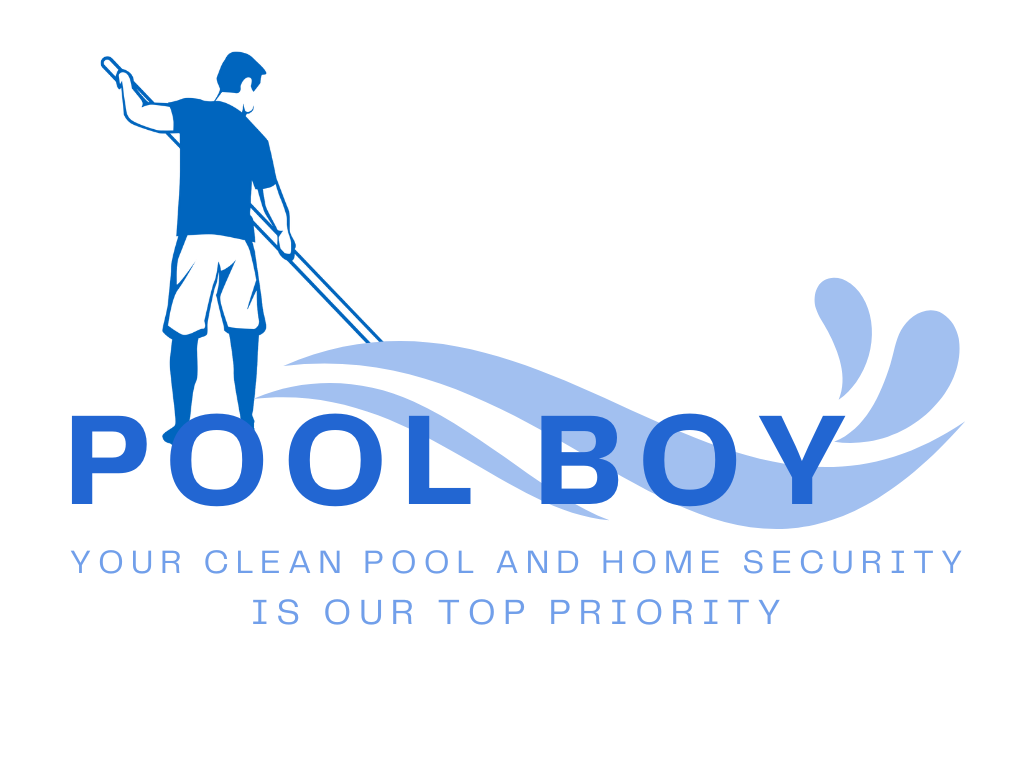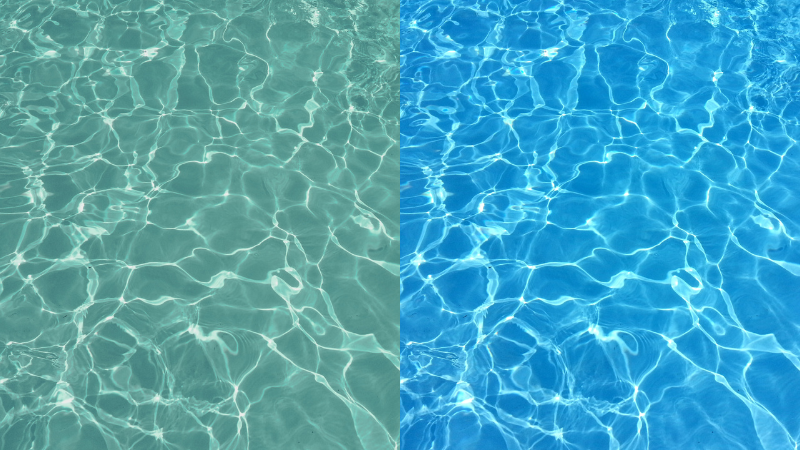How to Keep Your Pool Sparkling Clean
All Year Long
As a pool owner, there’s nothing quite like enjoying a crystal-clear swimming pool on a hot day. But sometimes, algae can sneak up on you, turning your pristine water into a cloudy, green mess. Fortunately, preventing algae growth in your pool is easier than you might think. With the right algae prevention treatment and a few essential steps, you can maintain clear, sparkling water throughout the entire pool season.
In this guide, we’ll walk you through everything you need to know about algae prevention, including what causes algae growth in pools, why it’s essential to stop it before it starts, and how to use the best algae treatments to keep your pool looking its best.
What is Algae and Why is it Harmful for Your Pool?
Algae are microscopic organisms that thrive in warm, sunny environments. They can appear in your pool in several different forms, from green algae (the most common) to yellow and even black algae. While algae are part of the natural ecosystem, they can quickly wreak havoc on your pool if they’re left unchecked.
Here’s why algae are so harmful:
- Cloudy Water: When algae bloom, they make the water cloudy and murky. This can make it difficult to see the bottom of your pool and reduce visibility.
- Slippery Surfaces: Algae can accumulate on the sides and bottom of your pool, creating a slimy, slippery surface that can be a safety hazard, especially for children and pets.
- Increased Chemical Demand: Algae consume your pool’s chlorine and other sanitizers, meaning your pool’s chemicals will need constant adjustment to maintain a healthy swimming environment.
- Unpleasant Odor: As algae decay, they can emit an unpleasant odor, creating a less-than-pleasant experience for swimmers.
The key to avoiding these problems is prevention. Algae thrive in pools with improper chemical levels, dirty surfaces, and stagnant water, so the better you maintain your pool, the less likely algae will find a foothold.
Understanding the Causes of Algae Growth
Before diving into algae prevention, it’s essential to understand the main factors that contribute to algae growth in pools. Algae spores are constantly in the air and can land in your pool at any time, whether from the wind, rain, or even on your swimwear and pool toys. However, algae growth is most likely to occur when certain conditions are present:
- Warm Water Temperatures: Algae thrive in warm water, which is why summer and early fall are prime times for algae blooms.
- Stagnant Water: Pools with poor circulation or areas that don’t get proper water flow are more susceptible to algae growth. Dead zones in the pool where water doesn’t circulate create the perfect environment for algae to take root.
- Low Chlorine Levels: Chlorine is your pool’s primary line of defense against algae. If your chlorine levels drop too low, algae can grow and multiply unchecked. Maintaining proper chlorine levels is key.
- Improper pH Levels: The pH of your pool water plays a significant role in preventing algae. When the pH level is off, it can reduce the effectiveness of chlorine and make it easier for algae to grow.
Algae Prevention Treatment
By incorporating algae prevention into your regular pool care routine, you can avoid the hassle of battling algae later on. Here are the best algae prevention treatments and tips to help you keep your pool algae-free all season long:
Step 1 – Regular Pool Cleaning and Maintenance
One of the most effective ways to prevent algae is by keeping your pool clean and well-maintained. This includes daily skimming to remove debris, vacuuming the pool regularly, and brushing the walls and floor to eliminate any algae spores before they have a chance to grow.
- Skim Daily: Use a pool skimmer to remove leaves, twigs, and other debris that fall into the water. Organic debris provides a food source for algae and encourages its growth.
- Vacuum Weekly: Even if your pool looks clean on the surface, dirt and debris can accumulate on the bottom. Regular vacuuming helps remove this organic matter, preventing it from turning into algae food.
- Brush the Pool: Brushing the walls and floor of your pool at least once a week removes buildup and keeps algae from getting a foothold in hard-to-reach corners and crevices.
Step 2 – Maintain Proper Chemical Levels
Maintaining the right chemical balance is the cornerstone of algae prevention. The three most important chemicals to monitor are chlorine, pH, and alkalinity. Here’s a breakdown of what each of these does and how to keep them at the proper levels:
- Chlorine: Chlorine is the primary chemical used to sanitize your pool and kill algae. Aim for a chlorine level between 1.0 and 3.0 ppm (parts per million). If the chlorine level drops too low, algae can thrive.
- pH: The pH level of your pool water should be between 7.4 and 7.6. A higher or lower pH will reduce chlorine’s effectiveness, making it easier for algae to grow. Regularly test and adjust the pH to keep it within this range.
- Alkalinity: The alkalinity level should be between 80 and 120 ppm. Alkalinity acts as a buffer for your pool’s pH and helps prevent it from fluctuating too much.
Step 3 – Use Algaecide Regularly
Algaecides are chemicals specifically designed to prevent and control algae growth. They work by disrupting the algae’s ability to reproduce, stopping an outbreak before it starts. There are several types of algaecides, including:
- Copper-based algaecides: These are effective at killing algae, but they can stain the pool if not used properly.
- Polymer-based algaecides: These are safer for pool surfaces and prevent algae from regrowing. They’re perfect for long-term algae prevention.
Make sure to follow the manufacturer’s instructions for the correct dosage based on your pool size. Adding algaecide monthly (or as recommended) will significantly reduce the chances of algae making an appearance.
Step 4 – Shock Your Pool Regularly
Shocking your pool involves adding a large dose of chlorine to the water to kill any bacteria, algae spores, and organic matter that might be lurking. This process is essential to keeping your pool clean and clear, especially after heavy pool use, rainstorms, or high winds.
- Shock after heavy use: If your pool has been heavily used (like after a pool party or gathering), it’s important to shock the pool to kill off any lingering contaminants.
- Shock after a rainstorm: Rain can introduce algae spores into your pool, so after a storm, shock the pool to prevent any algae growth.
Step 5 – Ensure Proper Pool Circulation
Pools with poor circulation are more prone to algae growth. Make sure your pool’s pump and filter system is working efficiently. If certain areas of your pool aren’t getting enough circulation, consider adjusting the return jets to improve water flow throughout the entire pool.
- Check the pump: Ensure that your pump is running correctly and has enough power to circulate the water properly.
- Maintain the filter: Clean and backwash your pool filter regularly to keep it working efficiently. A clogged filter can reduce water flow and contribute to algae growth.
Step 6 – Cover Your Pool When Not in Use
If you’re not swimming regularly, especially during the off-season, covering your pool can help keep algae spores and debris out of the water. A high-quality pool cover blocks sunlight, which algae need to grow, and prevents organic material from entering the water.
Out Tip: Use a mesh pool cover that allows water to pass through but keeps leaves and debris out.
When Algae Strikes: How to Deal with an Outbreak
Even with the best algae prevention measures in place, algae can sometimes still make an appearance. If that happens, don’t panic. Here’s how to handle a pool algae outbreak:
- Brush the Pool: Start by brushing the walls and floor to break up the algae and make it easier to remove.
- Test and Adjust the Chemicals: Check the chlorine levels, pH, and alkalinity, and adjust them as needed to ensure the water is properly balanced.
- Shock the Pool: Add a strong chlorine shock treatment to kill the algae.
- Use Algaecide: After shocking the pool, use an algaecide to help prevent the algae from coming back.
- Clean the Filter: Run the filter continuously for 24-48 hours to remove any dead algae and debris.




